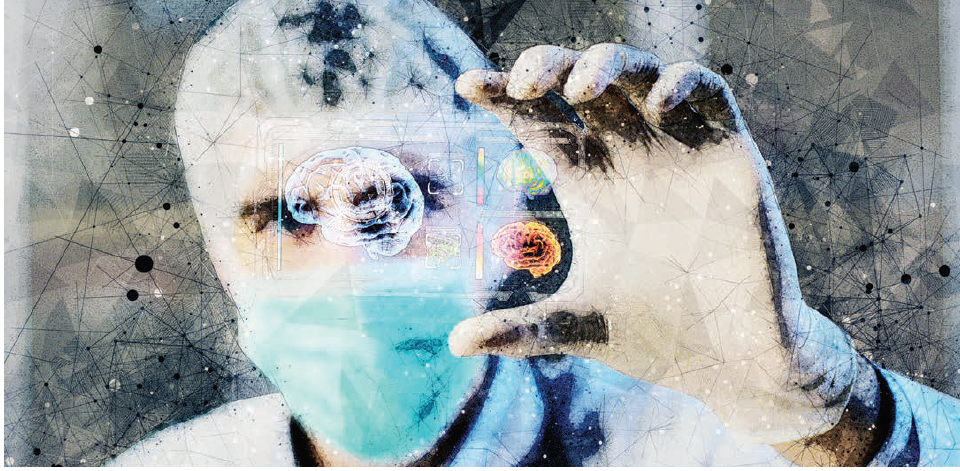The technology transforming the future of healthcare
Digital technologies and access to the internet are both critical to the promotion of universal health coverage, and ensuring treatment is within reach
By Houlin Zhao, ITU secretary-general
How can digital transformation help foster universal health coverage? Without digital technologies, we cannot achieve universal health coverage.
Digital technologies and services can help accelerate momentum towards all 17 Sustainable Development Goals, including target 3.8, to achieve universal health coverage.
Widely and wisely used, digital technologies can improve the quality of health care, from promotion, prevention and care to rehabilitation. Furthermore, digital financial services help mitigate drifting into poverty when using health services. They give people the ability to save, access health insurance and make healthcare payments; they help governments ensure that social security payments reach their intended recipients.
Which challenges lie ahead?
For the first time in history, at the end of 2018, 51.2% of the global population was using the internet. However, to ensure that health services become accessible for all, we need to ensure that digital transformation leaves no one offline.
 How is ITU working to advance health?
How is ITU working to advance health?
ITU has a long and productive history of collaboration with the World Health Organization. A few examples follow:
Since 2012, ITU has been helping countries develop national eHealth strategies. The WHO-ITU National eHealth Strategy Toolkit provides a comprehensive roadmap for governments to develop a digital health strategy, from leadership, strategy and investment, to infrastructure, legislation and policy, and workforce capacity.
Digital technologies and artificial intelligence will be essential tools in achieving universal health coverage. In July 2018, ITU, together with WHO, established the Focus Group on Artificial Intelligence for Health. It seeks to create a framework for benchmarking AI-based health solutions that will provide a common ground for national and regional medicine regulators in their certification processes.
Earlier this year, ITU and WHO launched a new global standard for safe listening devices to help young people lower the risk of early onset of hearing loss due to excessive exposure to loud sounds. ITU and WHO also developed a toolkit for assisting governments, industry and civil society to foster faster adoption of the standard.
A year ago, ITU launched the Regional Digital Health initiative to accelerate achievement of the SDGs in Africa, together with the WHO Regional Office for Africa. We joined forces to train the next generation of tech-savvy leaders, software developers and digitally literate healthcare workers in Africa.
Since 2013, ITU and WHO have been working on the BeHe@lthy, BeMobile initiative in 11 countries, using mobile technologies for preventing and controlling non-communicable diseases.
What should the priorities be for the global community now?
The delivery of services using digital technologies needs to be engrained in societies’ DNA. We need to continuously adopt digital technologies to fundamentally change the way health and other vital services are conceived, planned, designed, deployed and operated. In smart societies, digital services are driven by demand and are citizen-centric. Transformation is social, driven by technology.
We recommend three transformation pillars: whole-of-government strategic thinking, universal telecommunication service coverage and standards.
Whole-of-government strategic thinking
For this digital transformation, we need a whole-of-government approach to digital vision, strategy, policy and investment, to identify which technologies matter most in achieving universal health coverage, and to maximise economies of scale and return on investment. Leadership at the highest level is needed to bring together and coordinate across governments, donors, technology solution vendors and other actors from information and communications technologies, health, and other sectors.
Universal telecommunication service coverage
For universal health coverage, we need universal telecommunication service coverage. This means we still need to connect the other half of the world’s people to the internet and the benefits it brings.
It can be done. For example, the Republic of Niger is collaborating with ITU, WHO and others to connect more than 85% of its population, mostly rural, to the internet for health care, agriculture, education, financial, government and other services through the Niger 2.0 Smart Villages project.
Standards
ITU welcomes public and private sector players, from developed and developing countries, to join its standards-setting process. International standards can ensure interoperability, open up global markets, help protect investments, promote knowledge sharing, and spur innovation and growth. ITU’s Bridging the Standardization Gap programme facilitates the participation of developing countries in the standards-setting process.
We need to continue to work together to make sure that digital technologies and services are everywhere for all, for good, for our future.












